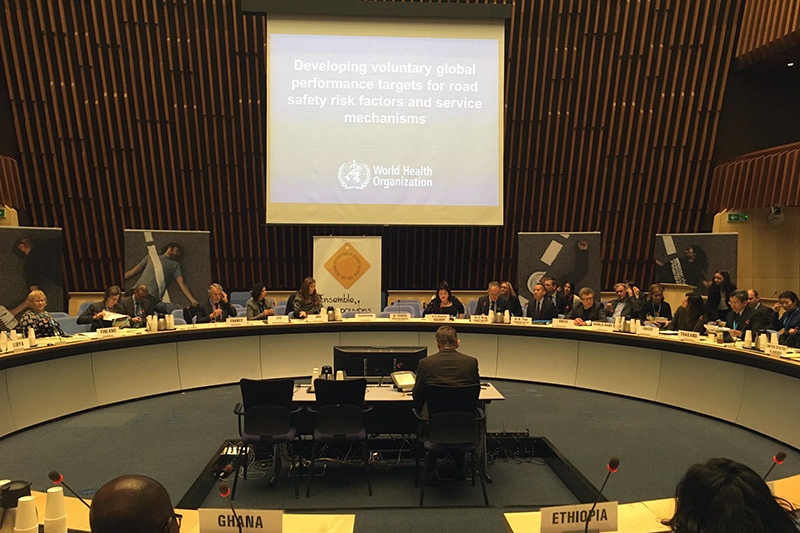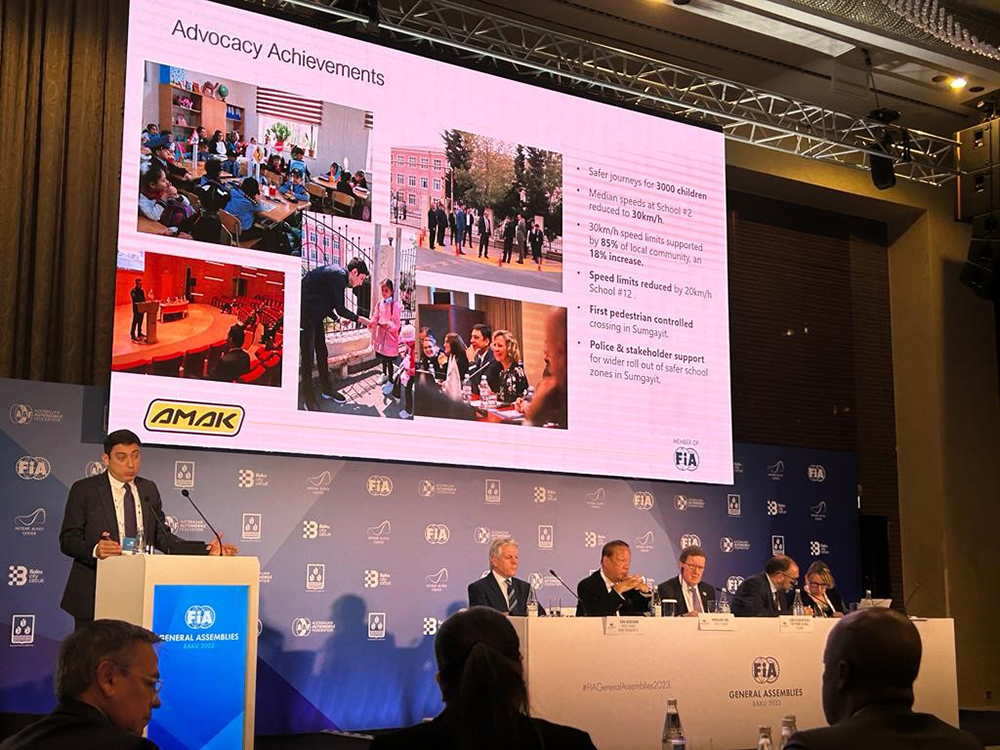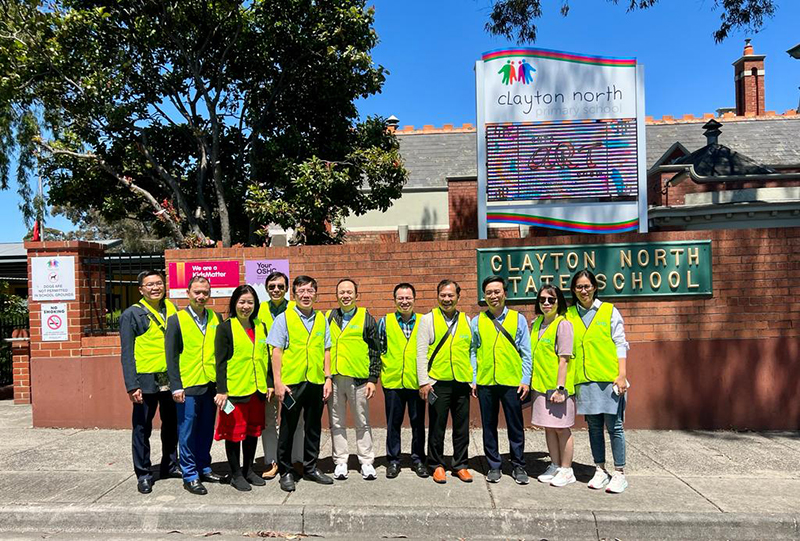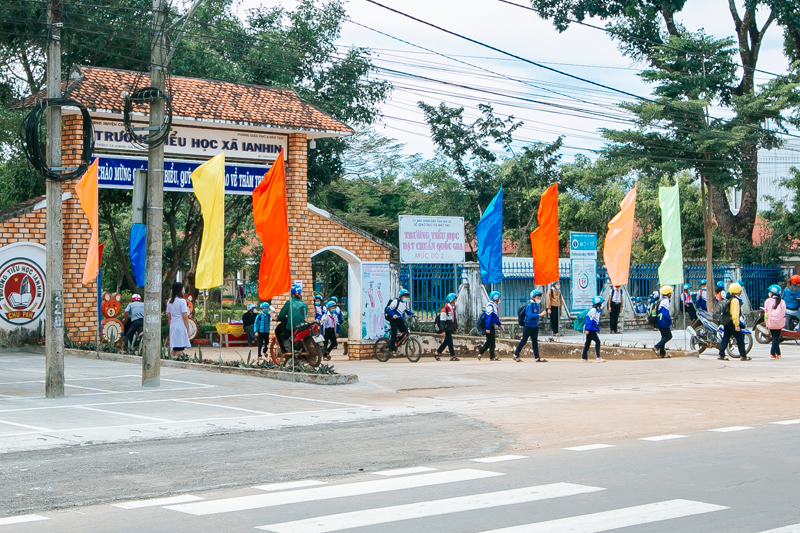Dr Tedros urges child health action as Governments agree road safety targets
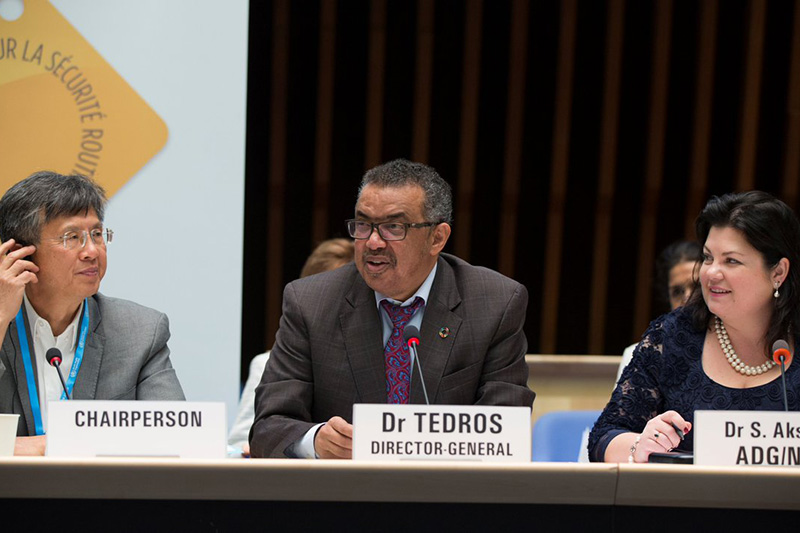
Governments have reached agreement on a set of global targets intended to drive progress towards the Sustainable Development Goal (SDG) agenda on road safety.
At meetings hosted by the WHO in Geneva on 20 and 21 November, 60 governments together with UN agencies finalised work towards the targets which will provide the framework for measuring and guiding progress towards the SDG road safety objectives.
SDG target 3.6 seeks to halve road traffic deaths and injuries by 2020 and SDG target 11.2 includes a focus on providing safe, sustainable transport systems for all, improving road safety and with special attention to key groups such as children and the vulnerable.
The agreed targets are also in line with the Decade of Action for Road Safety and it’s five pillars - road safety management, safer roads and mobility, safer vehicles, safer road users, and post-crash response.
Delegations working on the targets included Brazil, China, Ethiopia, France, Kenya, the EU, Ghana, Russia, Spain, Thailand and the US. Along with WHO, international agencies included UNECE, the World Bank, and UNICEF. FIA Foundation Deputy Director Avi Silverman provided input and advice to UNICEF in the negotiations.
Speaking at the meeting, WHO Director General Dr Tedros Adhanom Ghebreyesus (see main image above) had emphasised the importance of the work, particularly for children and young people. “Road injuries are the top cause of death for young people. It is simply not possible to improve child and adolescent health if we don’t address road traffic crashes”.
“By making roads and vehicles safer, and by improving the behaviour of road users, we can prevent road traffic crashes from happening in the first place.”
Of the 12 targets, 11 are aimed at 2030. They include: all new roads to achieve technical standards for road safety or meet a minimum three star road assessment rating; halve the proportion of vehicles travelling over the posted speed limit and achieve a reduction in speed-related injuries and fatalities; increase the proportion of motorcycle riders correctly using standard helmets to close to 100%; and halve the number of road traffic injuries and fatalities related to drivers using alcohol. A target for all countries to establish a comprehensive national road safety action plan is set for 2020.
FIA Foundation Deputy Director Avi Silverman said: “These targets are essential if there is to be global progress towards the SDG agenda on road safety. They provide a clear set of actions to be prioritised by governments worldwide. And importantly, they take into account the needs of children and the vulnerable, setting the key objectives to save lives on the world’s roads.”
The global targets were first called for in the Brasilia Declaration for Road Safety in its focus on implementing the road safety SDGs.
